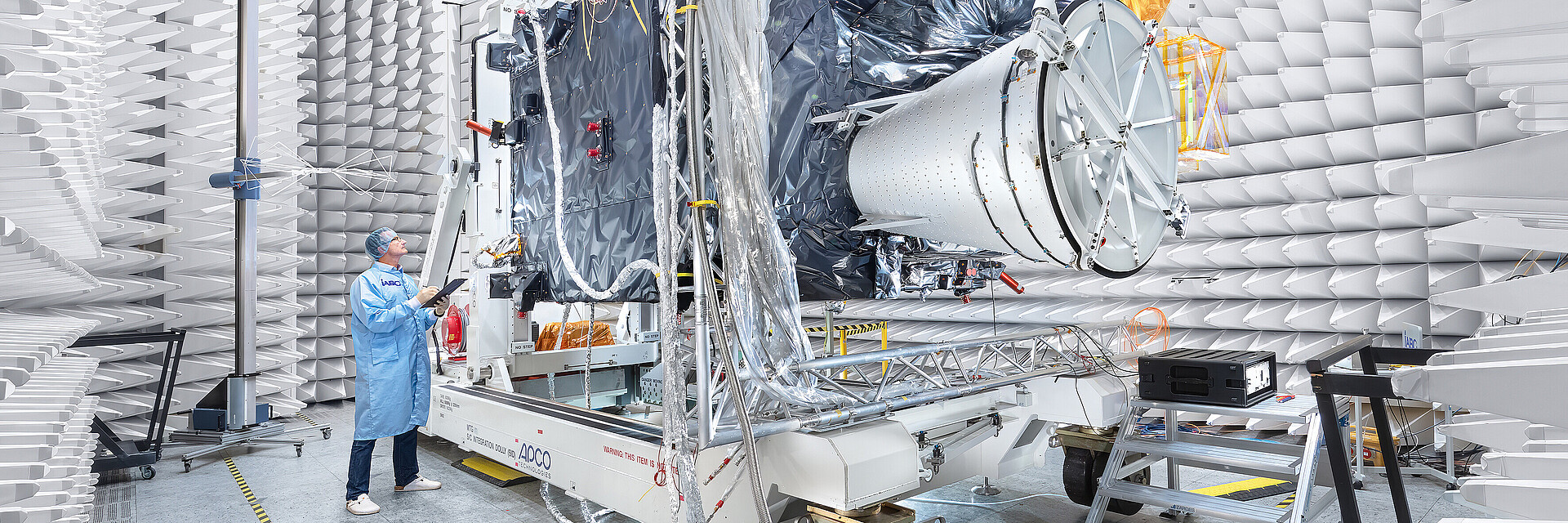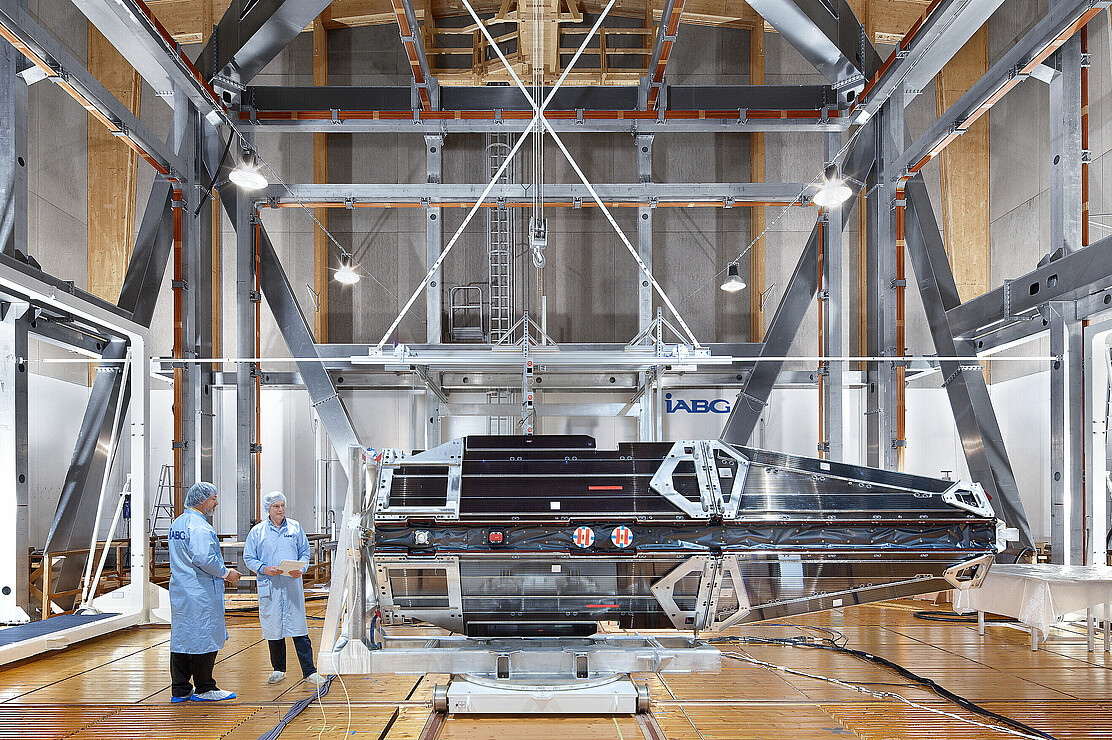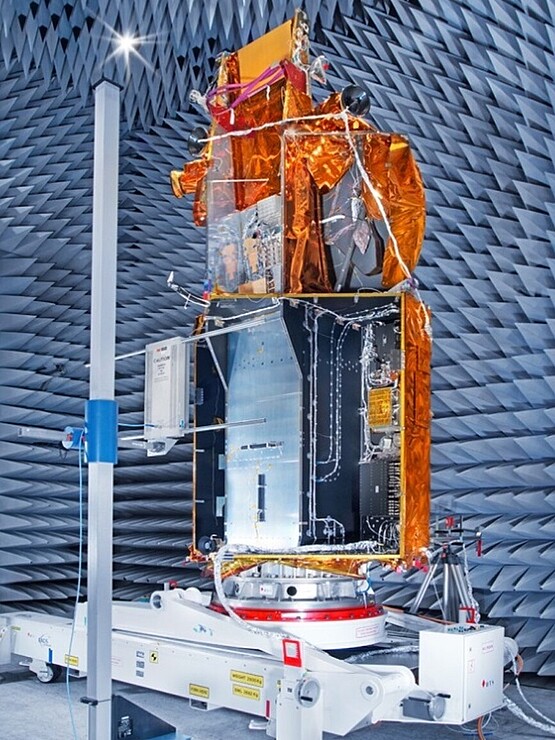Many complex systems, such as satellites, are integrated from several subsystems and components to form an overall system. Each electronic sub-unit becomes a source of interference by emitting internally generated signals and also becomes an interference sink by absorbing interference from the neighboring sub-systems. This interference can occur either via radiation or via the connecting cables. At the same time, the electromagnetic environmental conditions at the place of use, e.g. in space, must be taken into account.
We operate four EMC laboratories in which the electromagnetic compatibility of electrical components and systems is tested. The result of the tests is a system whose own interference emissions are limited and which at the same time demonstrates considerable immunity to external interference. Both conditions together reduce the mutual interaction to a level that ensures the functionality of the system in all operating conditions at the place of use.
We carry out electromagnetic compatibility (EMC) testing in our DIN EN ISO 17025 accreditedEMC test laboratory in three anechoic chambers and an unshielded laboratory.
For measurements on satellites and their components, we use ESA standards (ECSS-E-ST-10-07), NASA standards or standards defined for the ISS.
The tests for aviation equipment are based on the RTCA DO-160 and industry standards from Boeing (D6-16050) or Airbus (ABD0100). Of course, test facilities and test equipment also meet demanding military standards such as MIL-STD-461, MIL-STD-1275, MIL-STD-704, AMD24, VG95373, Tornado, Eurofighter.


